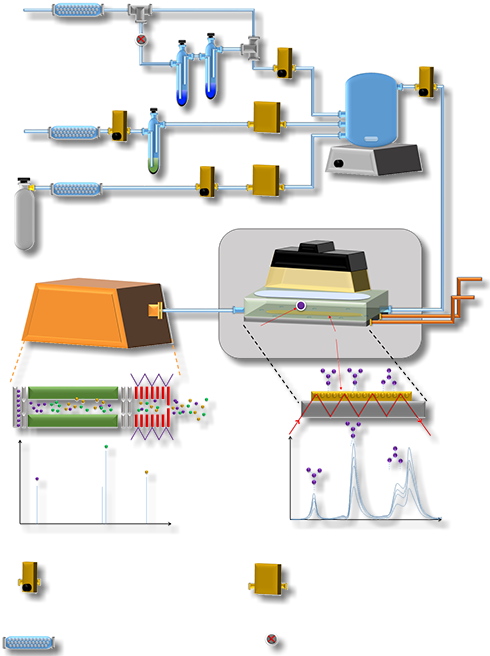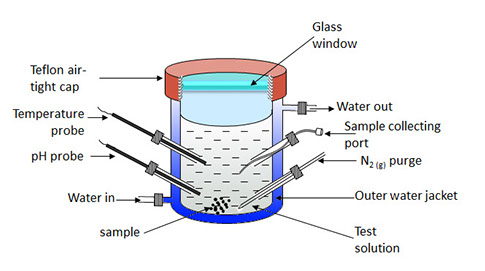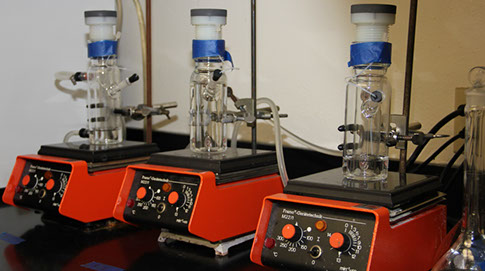Custom Built Reactor Systems
In the flow reactor system, ATR-FTIR spectrophotometry is coupled with atmospheric pressure quadrupole residual gas analyzer (RGA) for multi-analysis of chemical and photochemical reactions on metal oxide particles under simulated environmental conditions (i.e. relative humidity, temperature, solar flux). During the experiment, a thin layer of metal oxide particles deposited on the ATR crystal, placed in the internal compartment of the FTIR spectrometer (Thermo Nicolet is50), is exposed to a steady stream of traces gases. The reactive gases are mixed well prior to introduction to the reaction chamber. Kinetics and speciation of new surface product formation (monodentate, bidentate and bridged) are analyzed by collecting surface IR spectra as a function of time. Primary gases and secondary gas products are quantified using mass spectrometry.
Here, temperature is controlled by using a flow through jacketed ART crystal (PIKE Technologies) and a refrigerated/heated circulator (Julabo). Relative humidity is introduced by passing a controlled dry air flow through water bubbler and continually monitored via RH sensor attached to the reaction chamber. Simulated sun light (~ 1 sun) is provided using a 150 W xenon solar simulator (Newport).


Dissolution measurements are conduced as batch reactor studies in custom-built glass reactors. The glass reaction vessel has a capacity of 100 mL and is stirred using a magnetic stir bar. The vessel has a quartz window with an area of 15 cm2 mounted on top that permitted deoxygenated experiments and is removable to allow for dissolution reactions to proceed under atmospheric conditions. For experiments that requires anaerobic conditions, suspensions are purged with N2 for ∼15 min at flow rate of ~120 mL/min, prior to dissolution. And during the experiment, the head-space of the reaction vessel is purged to maintain positive N2pressure. The temperature is kept constant, usually at room temperature, through the use of a water jacket integrated to the reaction vessel and monitored throughout the experiment. The pH of the reaction medium is constantly monitored with a glass electrode standardized with pH buffer solutions. Experiments are performed at constant pH and are adjusted with HCl as necessary. Over time, samples are periodically removed from the reactor using a disposable syringe that is connected to 12 cm of Teflon tubing. Aliquots (1 mL) are collected after passing through a 0.2 μm PTFE filter and save for analysis. In photo-induced dissolution experiments, a solar simulator with a 150 W xenon solar simulator (~ 1 sun, Newport) is placed above the quarts glass window.
